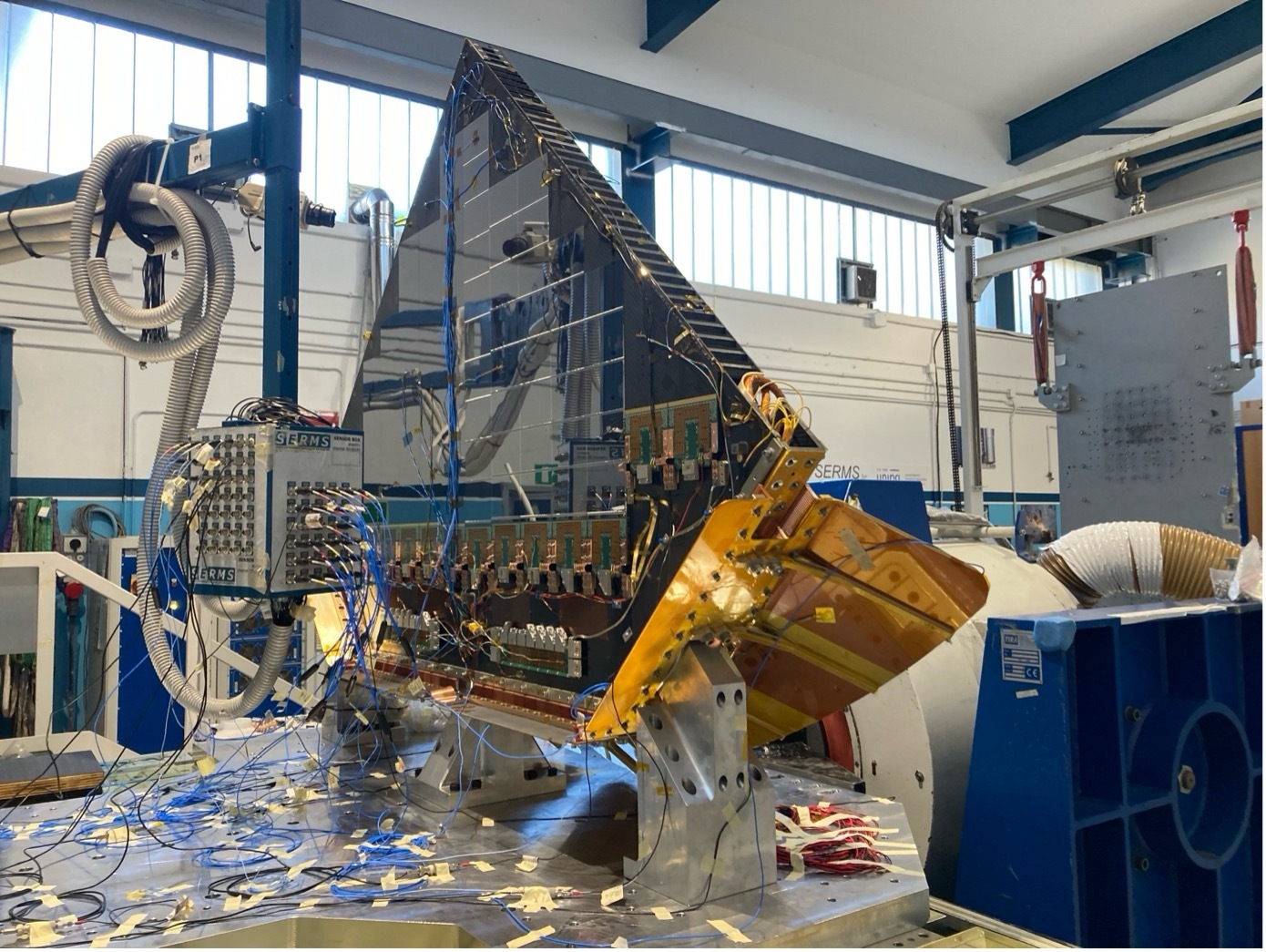In 2011, the Alpha Magnetic Spectrometer (AMS) was installed on the International Space Station (ISS). Since then, it has recorded more than 200 billion cosmic ray events and, while most of their sources are known, a few signatures in the data could point to dark matter. The detector’s latest upgrade will enable scientists to investigate this further.
AMS collects cosmic ray particles that reach Earth coming either directly from the Sun or from far-away sources such as stars ending in supernovae or black holes. Most of the cosmic rays that AMS detects are protons, but heavy nuclei like iron or silicon also reach the detector. However, one signature is particularly intriguing. AMS has detected an unusually high flux of positrons – the antimatter partners of electrons. Positrons and other antimatter particles are rare in the Universe and hence not expected to be seen in the observed data at the strength found by AMS. Their origin is not yet confirmed; they could come from pulsars (fast rotating remnants of stars that emit regular signals), a yet-unknown astrophysical source or dark matter. The observed positron flux fits very well with dark matter models. But in order to investigate this more accurately, the AMS collaboration is now working on refurbishing the detector.
The main upgrade will be a new detector layer with a higher number of silicon strips that will increase the acceptance of recording infalling particles by 300%. “By 2030, AMS will extend the energy range of the positron flux and reduce the error by a factor of two compared with current data,” says AMS spokesperson Sam Ting (MIT). This will allow the detector to investigate the positron signature even further.
A second important addition will be three new radiative surfaces. Because AMS is exposed to direct sunlight, it was painted white to reflect excess heat and remain at operational temperatures. After 13 years in the demanding conditions of space, the paint has degraded and, to compensate for this, the new radiators will keep AMS cool again.

Currently, all the parts of the new upgrade, including electronics and hardware, are being built as “validation” and “qualification” models. If they pass all the tests happening at CERN, INFN Perugia and IABG in Germany, the final flight model will go into production. Astronauts are already training with the prototypes in space-like environments on Earth. In 2026, when the upgrade is launched, the astronauts will mount the new detector parts onto AMS during spacewalks. “Everything is going very, very fast,” says chief engineer Corrado Gargiulo (CERN). “This is a requirement, otherwise we arrive too late at the ISS for the upgrade to make sense.” Indeed, the mission now has an end date. NASA has scheduled the deorbiting of the ISS for 2030 and, until then, AMS will have plenty of cosmic ray events to record to explore the positron signature.
A mock-up detector for the next AMS upgrade, which will be installed during the next anticipated spacewalk for AMS. Another part of the upgrade includes a large power distribution system (PDS) radiator to restore AMS’s optimal thermal performance. (Image: Chetna Krishna/CERN)

